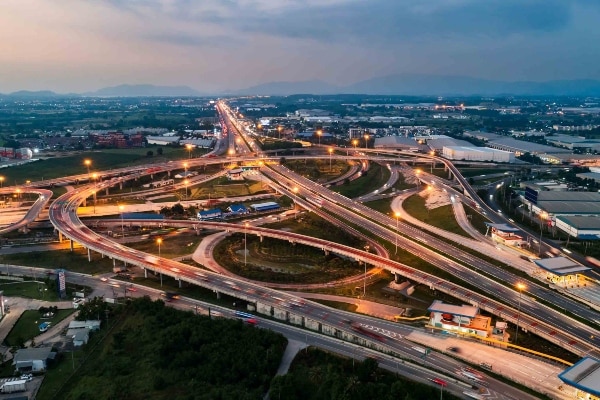-
Featured services
2026 Global AI Report: A Playbook for AI Leaders
Why AI strategy is your business strategy: The acceleration toward an AI-native state. Explore executive insights from AI leaders.
Access the playbook -
Services
Alle Services und Produkte anzeigenNutzen Sie unsere Fähigkeiten, um die Transformation Ihres Unternehmens zu beschleunigen.
-
Services
Network-Services
Beliebte Produkte
-
Services
Cloud
Beliebte Produkte
-
Services
Consulting
-
Edge as a Service
-
Services
Data und Artificial Intelligence
- KI und intelligente Lösungen
- Daten-/KI-Strategie und -Programm
- Data Engineering und Plattformen
- Daten-Governance und -management
- Datenvisualisierung und Entscheidungsfindung
- $name
- GenAI Platforms
- GenAI Industry Services
- GenAI Infrastructure Services
- GenAI Value Transformation
- Data und Artificial Intelligence
-
-
Services
Global Data Centers
-
Beliebte Produkte
-
Services
Application Services
-
Services
Sustainability Services
-
Services
Digital Workplace
-
Services
Business Process Services
-
Services
Generative AI
-
Services
Cybersecurity
-
Services
Enterprise Application Platforms
![]()
IDC MarketScape: Anbieterbewertung für Rechenzentrumsservices weltweit 2023
Wir glauben, dass Marktführer zu sein eine weitere Bestätigung unseres umfassenden Angebotes im Bereich Rechenzentren ist.
Holen Sie sich den IDC MarketScape -
-
Erkenntnisse
Einblicke und RessourcenErfahren Sie, wie die Technologie Unternehmen, die Industrie und die Gesellschaft prägt.
-
Erkenntnisse
Ausgewählte Einblicke
-
Die Zukunft des Networking
-
Using the cloud to cut costs needs the right approach
When organizations focus on transformation, a move to the cloud can deliver cost savings – but they often need expert advice to help them along their journey
-
So funktioniert Zero-Trust-Sicherheit für Ihr Unternehmen
Sorgen Sie dafür, dass Zero-Trust-Sicherheit für Ihr Unternehmen in hybriden Arbeitsumgebungen funktioniert.
-
-
Erkenntnisse
![]()
Copilot für Microsoft 365
Jeder kann mit einem leistungsstarken KI-Tool für die tägliche Arbeit intelligenter arbeiten.
Copilot noch heute entdecken -
-
Lösungen
Alle LösungenWir helfen Ihnen dabei, den Anforderungen an kontinuierliche Innovation und Transformation gerecht zu werden
Global Employee Experience Trends Report
Excel in EX mit Forschung basierend auf Interviews mit über 1.400 Entscheidungsträger:innen auf der ganzen Welt.
Besorgen Sie sich den EX-Report -
Erfahren Sie, wie wir Ihre Geschäftstransformation beschleunigen können
-
Über uns
Neueste Kundenberichte
-
Liantis
Im Laufe der Zeit hatte Liantis, ein etabliertes HR-Unternehmen in Belgien, Dateninseln und isolierte Lösungen als Teil seines Legacysystems aufgebaut.
-
Randstad
We ensured that Randstad’s migration to Genesys Cloud CX had no impact on availability, ensuring an exceptional user experience for clients and talent.
-
-
![Heineken Landing Page]()
NTT DATA und HEINEKEN
HEINEKEN revolutioniert die Mitarbeitererfahrung und die Zusammenarbeit mit einem hybriden Arbeitsplatzmodell.
Lesen Sie die Geschichte von HEINEKEN -
- Karriere
Topics in this article
I recently had the opportunity to participate in a masterclass on sustainability in manufacturing, hosted by the Manufacturing Leadership Council. The conversation covered topics such as digital twins, supply chain optimization and the importance of embedding sustainability into core business practices.
After the discussion, several ideas resonated with me that I’d like to share. These ideas will be helpful for any organization that wants to become more resilient and efficient.
Obligation has become opportunity
Sustainability was once seen as a check box to tick for regulators and stakeholders, but that view has shifted. It is now recognized as a significant driver of both bottom-line efficiency and top-line growth.
According to NTT DATA’s Global GenAI Report, nearly two-thirds of organizations plan to make significant investments in emerging technologies such as GenAI in 2025–26, with C-suite executives ranking sustainability among the top three motivators for these investments.
Manufacturers in particular are realizing that pragmatic sustainability, anchored in ROI and resilience, delivers tangible benefits. Reduced waste, optimized energy use and smarter supply chains are simply good business.
Embedding sustainability from the outset
A key theme in our masterclass was that sustainability can no longer sit on the sidelines. It must be woven into the very fabric of how organizations operate — much as quality and safety functions have become universal in recent decades. This means shifting from isolated “green projects” to embedding sustainability practices throughout an organization.
It also means executive leadership needs to set the tone. Without clear commitment from the top, sustainability efforts risk becoming fragmented or deprioritized.
Just as Six Sigma — a disciplined, data-driven methodology for improving processes and reducing defects — once demanded organization-wide engagement, sustainability now calls for the same level of participation through training, performance metrics and clear accountability.
Real-time data is the game changer
Perhaps the most exciting development is the role of real-time data in making sustainability actionable. Traditional annual reporting offers only a rearview mirror, but real-time insights allow us to intervene, optimize and innovate in the moment.
Take the example of digital twins. By creating a digital replica of a manufacturing facility or supply chain, organizations can monitor energy consumption, predict equipment failures and test sustainability improvements before making capital investments.
In fact, NTT DATA’s research shows that 96% of organizations agree that combining digital twins with AI can optimize physical asset performance and supply chain resilience. Real-time logistics data can streamline transportation routes, reduce carbon emissions and improve delivery efficiency while saving money.
Rethinking the value chain
During the discussion, my colleagues emphasized that sustainability is both about reducing environmental impact and about reimagining entire business processes. Procurement, product design, aftermarket services — every stage offers opportunities to reduce emissions and costs.
Consider the seemingly simple case of providing laptops and devices for employees.
Traditionally, devices were shipped multiple times, configured manually and replaced outright when they failed. By rethinking this process — for example, by automating provisioning at the factory, consolidating shipments and refurbishing rather than replacing devices — organizations can slash both costs and emissions. In addition, real-time device telemetry enables proactive device monitoring and condition-based maintenance.
It’s a small example of how operational redesign aligned with sustainability creates measurable value.
Choosing the right metrics
Metrics matter. Too often, organizations measure sustainability in broad totals, such as their overall emissions. While useful for reporting, these measures don’t incentivize smarter practices.
A better approach is to use intensity metrics such as emissions per unit of output, or per employee served. These metrics, which are within managers’ control, align sustainability with business growth. After all, we don’t want organizations to reduce their environmental impact only by shrinking; we want them to do so while growing.
Data quality — without perfection
Of course, data quality is a perennial challenge. Perfect datasets are rare, yet waiting for flawless numbers only delays progress. A more practical approach is to establish a baseline and measure improvements over time. This allows organizations to act today rather than wait endlessly for the “perfect” system.
As with AI adoption, sustainability requires iteration: Start with what you have, improve continuously and build trust in your data over time.
The role of AI and emerging technologies
AI adds another layer of opportunity and responsibility. On the one hand, AI itself consumes significant energy, raising concerns about its carbon footprint. On the other hand, it can drive sustainability by enabling predictive maintenance, optimizing supply chains and monitoring compliance with regulations such as Europe’s new deforestation rules.
Notably, according to NTT DATA’s GenAI report, 94% of organizations are already implementing energy-efficient data management practices to reduce storage and processing needs, and 91% now require new AI vendors to meet sustainability standards.
AI also enhances tools like carbon calculators by turning raw data into actionable insights. The combination of AI and human expertise enables organizations to model scenarios, test strategies and anticipate risks far more effectively than with traditional methods.
- ALSO READ → Integrate environmental stewardship into your business practices to fuel economic growth
Moving forward: Practical steps
So, what does this mean for leaders looking to advance sustainability in their organizations?
- Make it core, not peripheral: Treat sustainability like quality or safety, integrated across the organization.
- Invest in real-time data: Use digital twins, IoT and advanced analytics to act on insights as they happen.
- Focus on intensity metrics: Incentivize smarter practices in addition to lower totals.
- Balance progress with pragmatism: Don’t wait for perfect data; start today and improve over time.
- Leverage AI responsibly: Use AI both to reduce your footprint and to amplify your decision-making.
The time to act is now
The masterclass was a reminder that sustainability is both an innovation challenge and a value opportunity. Organizations that embrace sustainability as part of their DNA will future-proof their operations and create a lasting competitive advantage.
As we move into an AI-driven economy, sustainability is increasingly defining agility, resilience, trust and growth. Those that recognize this shift and act now will lead the way.




